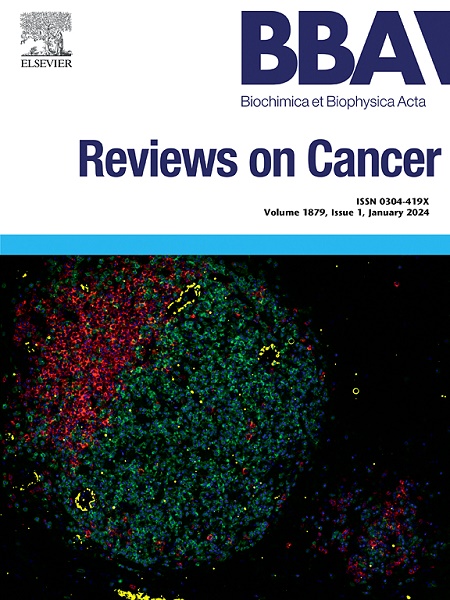获取长链非编码RNA的GIST
IF 9.7
1区 医学
Q1 BIOCHEMISTRY & MOLECULAR BIOLOGY
Biochimica et biophysica acta. Reviews on cancer
Pub Date : 2025-05-28
DOI:10.1016/j.bbcan.2025.189357
引用次数: 0
摘要
胃肠道间质瘤是消化道最常见的间质恶性肿瘤。其中约85%的人在KIT或PDGFRA中发生功能获得性突变,导致这些受体酪氨酸激酶的组成性激活,这是GIST发展的驱动因素。虽然局部GIST可以通过手术治愈,但伊马替尼(一种酪氨酸激酶抑制剂)是晚期/转移性疾病的首选治疗方法。然而,超过一半的患者会出现继发性耐药性。长链非编码RNA (lncRNA)的最新研究进展揭示了它们在GIST生物学中的作用,揭示了一个复杂水平的基因表达调控,有助于发病、恶性进展和对伊马替尼的治疗反应。本文旨在对GIST中lncrna的相关知识进行综述。了解lncrna的作用为了解肿瘤行为和耐药机制提供了有价值的见解。各种lncrna的功能被描述为它们可以作为致癌基因或肿瘤抑制基因。lncrna在临床环境中作为预后和预测指标的潜力也进行了综述。讨论了lncRNA研究中的挑战,以及将lncRNA作为GIST治疗靶点的前景,强调了正在进行的研究的重要性,以充分发挥其改善患者护理的潜力。本文章由计算机程序翻译,如有差异,请以英文原文为准。
Getting the GIST of long non-coding RNA
Gastrointestinal stromal tumors (GISTs) are the most common mesenchymal malignancies of the digestive tract. About 85 % of them have gain-of-function mutations in KIT or PDGFRA, resulting in constitutive activation of these receptor tyrosine kinases, which are drivers of GIST development. While localized GIST can be cured by surgery alone, imatinib, a tyrosine kinase inhibitor, is the treatment of choice for advanced/metastatic disease. However, more than half of patients develop secondary resistance. Recent advances in the study of long non-coding RNA (lncRNA) have shed light on their role in the biology of GIST, revealing a complex level of gene expression regulation that contributes to pathogenesis, malignant progression, and therapeutic response to imatinib. This review aims to provide a comprehensive overview of the current knowledge regarding lncRNAs in GIST. An understanding of the roles of lncRNAs provides valuable insights into tumor behaviour and resistance mechanisms. The functions of the various lncRNAs are described as they can act as oncogenes or as tumor suppressor genes. The potential of lncRNAs in the clinical setting as prognostic and predictive indicators is also reviewed. The challenges in lncRNA research are discussed as well as the prospects of incorporating lncRNAs as target for GIST treatment, highlighting the importance of ongoing research to achieve its full potential to improve patient care.
求助全文
通过发布文献求助,成功后即可免费获取论文全文。
去求助
来源期刊

Biochimica et biophysica acta. Reviews on cancer
医学-生化与分子生物学
CiteScore
17.20
自引率
0.00%
发文量
138
审稿时长
33 days
期刊介绍:
Biochimica et Biophysica Acta (BBA) - Reviews on Cancer encompasses the entirety of cancer biology and biochemistry, emphasizing oncogenes and tumor suppressor genes, growth-related cell cycle control signaling, carcinogenesis mechanisms, cell transformation, immunologic control mechanisms, genetics of human (mammalian) cancer, control of cell proliferation, genetic and molecular control of organismic development, rational anti-tumor drug design. It publishes mini-reviews and full reviews.
 求助内容:
求助内容: 应助结果提醒方式:
应助结果提醒方式:


